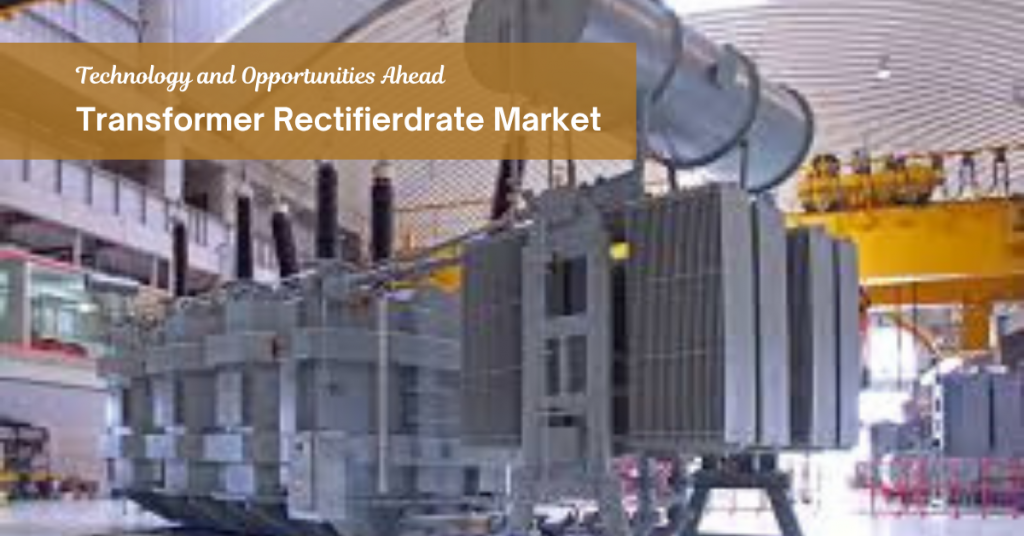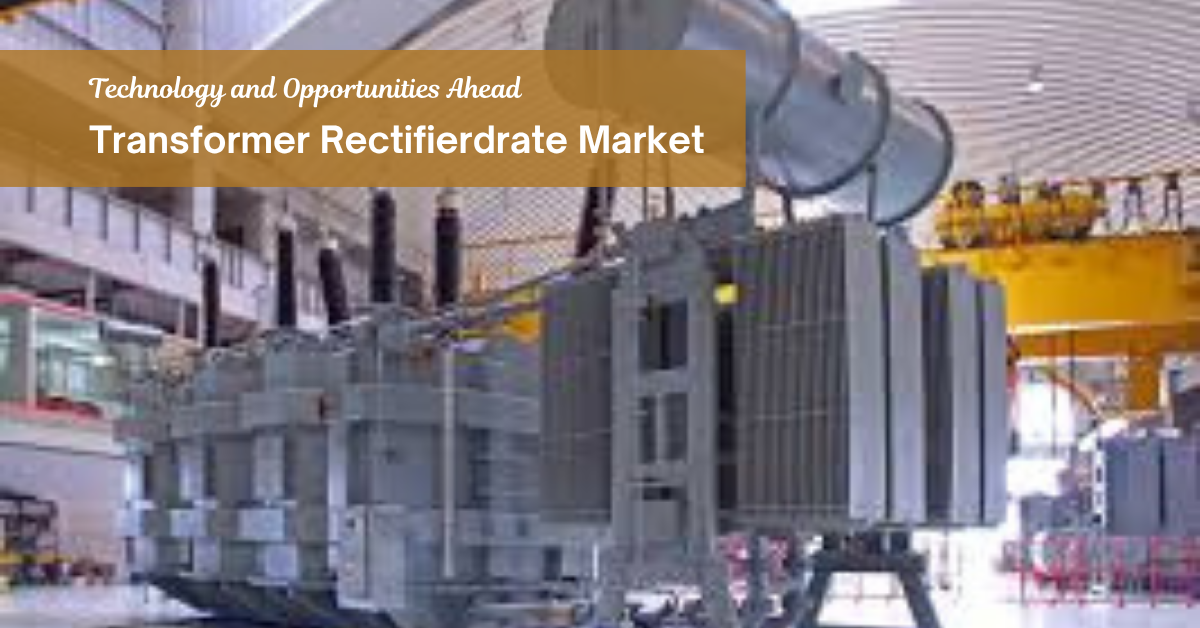
Market Overview
The transformer rectifier market was valued at USD 1915 million in 2024 and is projected to reach USD 2786.4 million by 2032, growing at a CAGR of 4.8% during the forecast period (2024-2032). This growth is being fueled by rising demand for stable direct current supply in industries such as electroplating, electrolysis, power systems, and water treatment. Transformer rectifiers have become an integral component in energy-intensive industries due to their reliability and ability to maintain steady power output even under fluctuating load conditions.
The relevance of the transformer rectifier market has increased significantly in today’s industrial landscape. With industries moving towards automation and energy efficiency, rectifiers are playing a vital role in ensuring consistent power quality. Their use in large-scale infrastructure projects, renewable energy storage, and corrosion protection systems highlights their critical function in supporting sustainable operations. Furthermore, ongoing urbanization, coupled with investments in public utility infrastructure, has strengthened the demand for advanced rectifiers capable of operating under harsh environmental conditions.
Asia Pacific remains the dominant market, with rapid industrialization driving bulk procurement, whereas North America and Europe are witnessing steady adoption due to regulatory requirements for energy-efficient electrical equipment. As industries strive for cost optimization and operational efficiency, transformer rectifiers are expected to remain a core element of modern power conversion systems. Technological advancements, including intelligent monitoring and automated controls, are likely to further enhance their utility, opening up avenues for innovation and market expansion.
Read full report: https://www.credenceresearch.com/report/transformer-rectifier-market
Market Drivers
Industrial Growth and Rising Power Requirements
The rapid expansion of manufacturing, construction, and processing industries is significantly driving the demand for transformer rectifiers. Industries are increasingly relying on high-capacity rectifiers to ensure stable DC power for critical processes, especially in metal finishing, electroplating, and electrolysis. Urban infrastructure projects, including mass transit systems and water treatment facilities, also require rectifiers for uninterrupted operations. The growing emphasis on energy-efficient industrial processes has pushed companies to invest in advanced rectifiers. Furthermore, industrial expansion in emerging economies has created a consistent need for durable and high-performance rectifiers capable of handling large-scale operations.
Advances in Design and Power Conversion Technology
The transformer rectifier market is witnessing strong momentum due to rapid innovation in design and power electronics. Compact, lightweight rectifiers with better heat dissipation and improved efficiency are gaining acceptance among industries with limited space availability. Manufacturers are increasingly adopting semiconductor-based components to enhance performance and reduce energy losses. Smart monitoring systems and automation have further improved reliability, allowing operators to track performance remotely. Such technological upgrades have made modern rectifiers more cost-effective and durable, ensuring lower maintenance requirements and extended equipment lifespan, which is encouraging widespread adoption.
Growing Role in Renewable Energy Integration
As renewable energy projects continue to expand globally, transformer rectifiers are becoming essential for efficient energy storage and grid stability. In solar and wind energy applications, they help regulate voltage and provide steady DC power for battery charging and hybrid storage solutions. Smart grid systems are also integrating rectifiers to handle fluctuating energy inputs and maintain system balance. With global commitments to reducing carbon emissions, the deployment of rectifiers in renewable energy infrastructure is expected to grow rapidly. Incentives for renewable energy adoption across multiple regions further boost this trend.
Focus on Regulatory Compliance and Sustainability
Stringent energy regulations are pushing industries to adopt high-efficiency transformer rectifiers that reduce power wastage and comply with environmental standards. The shift towards sustainable industrial operations has encouraged the use of eco-friendly insulating oils and materials in rectifier manufacturing. Governments are offering incentives to industries adopting energy-efficient technologies, accelerating the replacement of outdated systems. Additionally, companies seeking international certifications for environmental compliance are upgrading their existing rectifiers to newer, efficient models. This trend is likely to create long-term growth opportunities for manufacturers offering innovative and eco-compliant solutions.
Market Challenges
Significant Upfront Investment
One of the primary challenges hindering market growth is the high initial cost of installing advanced transformer rectifiers. Many small and medium-sized enterprises delay procurement due to budget limitations, opting to continue with older, less efficient systems. The expense of premium components and digital monitoring technology further adds to the financial burden. Additionally, industries in cost-sensitive regions often hesitate to invest in high-quality rectifiers despite their long-term benefits. This price sensitivity limits large-scale adoption in developing markets.
Maintenance and Skilled Workforce Requirements
Operating transformer rectifiers requires routine maintenance and skilled personnel, which is challenging for industries with limited technical resources. Downtime during repairs or maintenance directly impacts production schedules, discouraging frequent servicing. The lack of specialized technicians, especially in developing countries, results in poor upkeep and reduced operational efficiency. Industries must also invest in training programs to maintain optimal performance, adding to overall operational expenses.
Compliance with Environmental and Safety Norms
The transformer rectifier industry is subject to strict environmental and safety regulations, especially concerning oil leakage, heat dissipation, and waste management. Meeting these standards often requires redesigning systems and investing in eco-friendly materials, which increases production costs for manufacturers. Small-scale producers find it difficult to comply with international certification requirements, limiting their competitiveness in global markets. Non-compliance can result in penalties and reputational damage, making regulatory adherence a critical but costly factor.
Competitive Pressure and Price Volatility
The market is highly competitive, with numerous global and regional players offering similar products. This has led to significant price pressure, reducing profit margins for manufacturers. Customers are demanding customized solutions at competitive prices, further straining manufacturers’ profitability. Emerging players from low-cost regions are intensifying the competition by offering budget-friendly alternatives, which established brands struggle to match without compromising on quality. This intense price competition may discourage heavy investments in research and development.
Market Opportunity
Expansion in Global Water Treatment Projects
The increasing demand for clean water has created significant opportunities for transformer rectifiers in water treatment and desalination plants. Electrolysis-based water purification processes rely heavily on rectifiers for consistent DC output. Governments worldwide are investing heavily in wastewater treatment and desalination infrastructure to tackle water scarcity. As industries shift towards zero-liquid-discharge operations, the requirement for rectifiers is expected to grow rapidly.
Growing Applications in Oil & Gas and Mining
Transformer rectifiers are playing a vital role in cathodic protection systems for pipelines, storage tanks, and offshore structures, particularly in the oil & gas sector. Mining operations also use rectifiers for processes such as electro-winning, which is becoming more prevalent with increasing mineral extraction activities. Harsh operating conditions in these industries require durable and reliable rectifiers, presenting manufacturers with an opportunity to design specialized equipment.
Integration with Energy Storage and Microgrids
The rising use of microgrids and energy storage systems in remote locations is expanding opportunities for transformer rectifiers. Hybrid energy systems combining renewable and conventional sources depend on rectifiers for voltage stability and energy conversion. With governments promoting energy independence and off-grid solutions, demand for rectifiers in this segment is expected to rise steadily.
Emerging Economies Driving Demand
Latin America, the Middle East, and parts of Africa are witnessing rapid industrialization, creating new opportunities for transformer rectifier manufacturers. Infrastructure development, mining expansion, and growing water treatment projects are major contributors. Government initiatives to modernize energy systems and invest in renewable energy projects are further boosting demand in these regions.
Market Segmentation
By Type
- Oil-Immersed
- Air-Cooled
By Application
- Electroplating
- Electrolysis
- Cathodic Protection
- Power Supply Systems
- Water Treatment
By Phase
- Single-Phase
- Three-Phase
By Region
North America
- U.S.
- Canada
- Mexico
Europe
- UK
- France
- Germany
- Italy
- Spain
- Russia
- Belgium
- Netherlands
- Austria
- Sweden
- Poland
- Denmark
- Switzerland
- Rest of Europe
Asia Pacific
- China
- Japan
- South Korea
- India
- Thailand
- Indonesia
- Vietnam
- Malaysia
- Philippines
- Taiwan
- Rest of Asia Pacific
Latin America
- Brazil
- Argentina
- Peru
- Chile
- Colombia
- Rest of Latin America
Middle East & Africa
- GCC Countries
- South Africa
- Rest of the Middle East and Africa
Regional Analysis
Asia Pacific continues to dominate the transformer rectifier market, accounting for nearly 40% of the global share. The region benefits from rapid industrial growth in China, India, and South Korea, as well as large-scale investments in water treatment and renewable energy infrastructure. Local manufacturers offering cost-effective solutions are further enhancing market penetration.
North America follows with approximately 25% market share, driven by modernization of electrical infrastructure and the growing oil & gas industry. The U.S. remains the largest contributor, with widespread adoption of smart grids and strong regulatory support for energy-efficient technologies. Investments in renewable energy storage and water treatment are also propelling regional growth.
Europe holds nearly 20% market share, supported by strict environmental regulations and upgrades to aging power networks. Countries such as Germany, France, and the UK are at the forefront of renewable energy integration, boosting the demand for advanced transformer rectifiers. The automotive and manufacturing sectors also contribute significantly to regional demand.
Latin America and the Middle East & Africa collectively account for around 15% of the market, with Brazil, Chile, and GCC countries witnessing rapid infrastructure and industrial expansion. Investments in desalination, mining, and oil & gas projects are expected to drive strong growth in these regions over the coming years.
Top Companies
- NWL
- Schenck Process
- Neeltran Inc.
- Siemens
- Secheron Hasler Group
- Avionic Instruments
- TBEA
- ABB Ltd.
- Hind Rectifiers Ltd.
- Fuji Electric
Future Outlook
- Increasing adoption in automated industrial systems will fuel long-term growth.
- Renewable energy projects will remain a key driver for rectifier demand.
- Desalination and water treatment plants will expand usage significantly.
- Compact and lightweight rectifier designs will become more popular.
- AI-enabled monitoring systems will enhance operational efficiency.
- Hybrid energy storage systems will create new business opportunities.
- Strategic alliances between global and regional players will improve market reach.
- Regulations will encourage the use of eco-friendly insulating materials.
- Demand from oil & gas pipelines and offshore projects will remain strong.
- Emerging markets in Latin America and Africa will witness accelerated adoption.
Read full report: https://www.credenceresearch.com/report/transformer-rectifier-market







